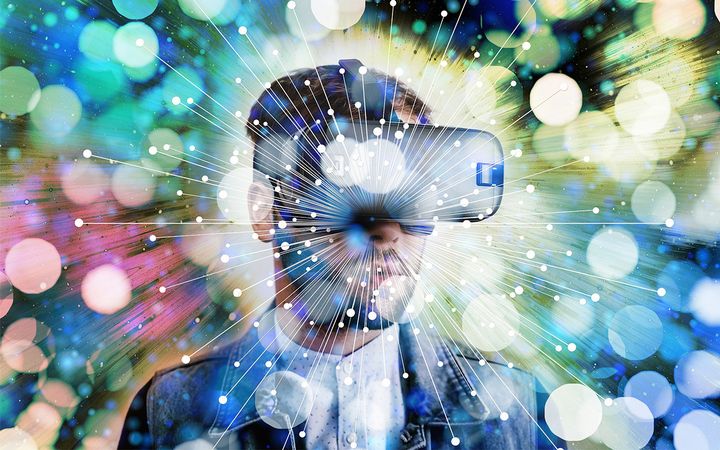Auto Manufacturers Expedite Technology For Safety & Production

Automotive manufacturers and suppliers’ production facilities across the country have deployed business continuity response teams to build coordinated efforts that bring together technology, operations, communications, and HR to build a set of policies, processes and procedures to keep everyone safe.
IMAGE: Gerd Altmann via Pixabay
Across the U.S., cases of Coronavirus continue to rise in record fashion. While this has caused great concern from a health perspective, questions continue to mount regarding just how many businesses will continue to optimally operate and function effectively while adhering to social distancing guidelines to keep employees and customers safe.
Industrial enterprises and manufacturers today are experiencing the next wave of technology innovation that will fundamentally alter the way they operate.
Automotive manufacturers and suppliers’ production facilities across the country have deployed business continuity response teams to build coordinated efforts that bring together technology, operations, communications, and HR to build a set of policies, processes and procedures to keep everyone safe.
Technology Helps Auto Manufacturers Keep Moving – Safely
Many automotive manufacturers, dealerships and their parts suppliers have all taken workplace safety to significant new heights, all because Covid-19 has forced them to be creative and even fastrack the use of technologies that keep the lights on safely.
One technology in particularly is getting a closer look by many manufacturers – Immersive Mixed Reality (MR) – which is best described as a fully immersive experience that brings virtual objects into the real world or one which blends the physical world with the digital one.
MR technologies, including Augmented Reality (AR) are poised to grow considerably over the next few years. In fact, The Augmented Reality market forecast is expected to reach $70-$75 billion in revenue1 by 2023.
What is Mixed Reality for Auto Manufacturers?
MR allows industrial designers and manufacturers the ability to conduct real-time 3D visualization and CAD for design and manufacturing; faster training cycles; and professionals can work at drastically higher levels. In fact, some manufacturers report minimized errors using MR through instructions overly, remote assistance, and better planning and visualization. This has resulted in a more than 40 percent increase in productivity in some instances. MR technologies provide significant time savings to the manufacturing build process through optimized decision process, which positively impacts the entire OODA Loop (Observe, Orient, Decide, Act).
These bottom-line improvements are made possible because of the greater efficiencies MR offers. The technology offers a three-dimensional, computer-generated environment that allows designers and engineers to interact with product builds by a person. That person then becomes a central part of this virtually created world in the form of a hologram, or is “immersed” within the production with the capability to manipulate objects or perform a series of actions in real time.
This technology is already being employed at some facilities to help design and build some of tomorrow’s vehicles.
How Manufacturers are Overcoming MR Challenges
However, many firms are also finding new challenges in employing newer MR technologies. Enterprise-grade high-quality MR platforms require both performance and scale. Manufacturers that deploy these gain a rich repository of existing complex 3D CAD/CAM models created over time.
As these virtual environments become richer and larger, the repository continues to increase. This cycle is repeated for each of the different MR hardware platforms, making it difficult for any manufacturer or business to move from experiments and pilots to full scale deployable solutions, thus stunting the speed of innovation and effectiveness.
Many manufacturers are overcoming this great challenge by leveraging new solutions offered through cloud-based (or remote server based) MR platforms powered by distributed cloud architecture and 3D vision-based AI. These MR cloud platforms provide the desired performance and scalability to drive innovation in the industry at speed and scale.
Industrial enterprises and manufacturers today are experiencing the next wave of technology innovation that will fundamentally alter the way they operate. This transformation is primarily driven by merging of the digital and physical world to create a better, smarter and more efficient way of operating. Immersive technologies such as Virtual Reality (VR), Augmented Reality (AR) and Mixed Reality (MR) technologies are playing a pivotal role in this transformation. The organizations that take a leadership role will be the ones that not only leverage these technologies, but they will partner with the right technology provider to help scale appropriately without having to stunt technological growth.
Dijam Panigrahi is Co-founder and COO of Grid Raster Inc., a leading provider of cloud-based AR/VR platforms that power compelling high-quality AR/VR experiences on mobile devices for enterprises. For more information please visit www.gridraster.com.
1: https://www.vxchnge.com/blog/augmented-reality-statistics

